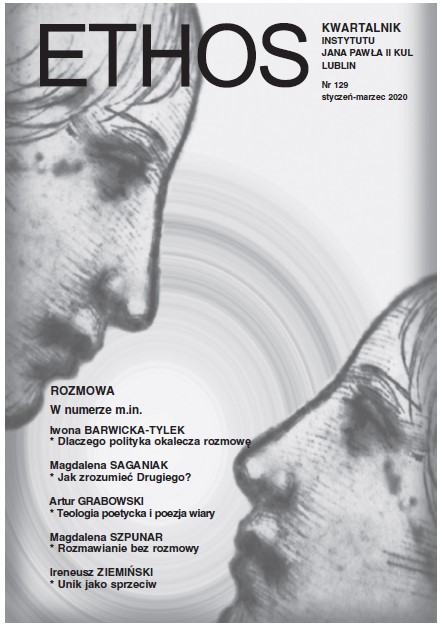Dialogiczny kontekst dzieła sztuki. Próba odniesienia Władysława Stróżewskiego koncepcji dialektyki twórczości do wybranych przykładów współczesnej sztuki performansu i instalacji wideo
The Dialogical Context of a Work of Art: An Attempt to Apply Władysław Stróżewski’s Concept of the Dialectic of Creativity to Selected Modern Instances of Performance Art and Video Installation
Author(s): Rafał SolewskiSubject(s): Theatre, Dance, Performing Arts, Sociology of Art
Published by: Katolicki Uniwersytet Lubelski Jana Pawła II - Instytut Jana Pawła II, Wydział Filozofii
Keywords: Władysław Stróżewski; dialectic; dialogue; intentionality of a work of art; performance; installation;
Summary/Abstract: The article scrutinizes the concept of the intentionality of a work of art, as well as that of dialogue, as expounded in Władysław Stróżewski’s Dialektyka twórczości [The Dialectic of Creativity]. The concepts in question are then applied in an analysis of Jerzy Bereś’s performance art, Mark Manders’s installations, Bill Viola’s video installations, and Artur Żmijewski’s critical art. Inspired by Stróżewski’s concept of the dialogical nature of the creative process, the proposed interpretation of the mentioned works makes it possible to discern the peculiarities of the intentionality of performance art, as well as to discover, in the case of the art of Bereś, qualities of essentialism and affirmativeness, which are not typical of performance as such. The ‘gift of self’ made by the artist is interpreted as a call for dialogue which goes beyond a personal narration and is discernible in an intentional concretization. In the case of Manders’s processual installation, the call in question is expressed by means of a metaphor. Viola’s dialogue with other artists, which exposes the presence of the scared as a value in his works, is, in turn, evidence of the merely apparent nature of the detachment of the signifier from the signified, so far considered as a characteristic mark of the art of installation. A dialectical approach, instead, makes it possible to grasp the moment an installation comes into being as a separate work. The interpretation of Żmijewski’s artistic endeavors proposed in the article leads to the conclusion that whenever critical art displays a need for dialogue, it becomes social art, and that a recognition of the absence of dialogue (which precludes change) may become an intentional complement to a work of social art. Moreover, the interpretational approach used throughout the article shows how dialogue, by unfolding the good and beauty, contributes to the transformation of a human collectivity into a community. The author argues that the principle that art is a servant of ideas is still valid and that its functioning can be seen also in works of modern art, once they are conceived as intentional objects.
Journal: Ethos. Kwartalnik Instytutu Jana Pawła II KUL
- Issue Year: 33/2020
- Issue No: 1
- Page Range: 179-204
- Page Count: 26
- Language: Polish
- Content File-PDF

